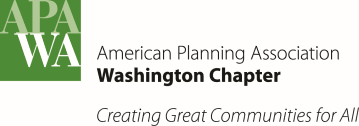Tips & Tricks for Planners
Ongoing
Below is a list of helpful lessons learned we have gathered from planners working with teachers and youth.
Outreach – Look for opportunities to work with teachers wherever you can
- Whenever you meet someone who is a teacher tell them about your interest in bringing planning into the classroom.
- Emphasize how your project aims to empower students to think about and express their opinions on how their community could be a great place in the future.
- Make contact with guidance counselors who know the subjects teachers teach and the needs you could help them fulfill.
Focus on teachers’ needs – Identify core academic subjects
- Ask teachers what they need and tie your program, workshop and curricula to teachers’ needs, identifying concepts that touch on several core academic subjects. Be willing to modify your content to match teacher objectives.
- Show teachers how your project helps illustrate how the subject matter they are teaching applies to students’ real lives.
Timing: Reach out early and widely, but be flexible
- Give teachers ample time to consider how best to incorporate your planning exercise into their curriculum by bringing ideas to them early in the school year, but understand that your topic might fit best at other times of the year.
Develop interactive exercises with real world local projects
- In the classroom, maintain a high level of interest by designing your program to be interactive, focusing on a handful of planning concepts, asking questions, and using local examples, where possible.
- Aim to peak students’ interest by asking questions and constructing exercises that make students think about what comes next.
- Try to answer students’ questions with another question that reframes or guides their thinking. Chances are they really want YOU to ask THEM the question so they can tell you what they think.
- Choose a topic that energizes. For example, talk about how important quality is and how construction materials can be used to improve designs and influence “place making” instead of talking about regulations.
- Keep it simple. Everything takes more time than you think.
Use images and props
- Liberally use maps, aerial photographs, drawings and 3-D simulations (if available) in your presentation.
- Make graphics simple and easy to understand, don’t overload students with data. Giving them a site plan with trip counts and turning movement arrows drawn with a sharpie works better than a 30-page traffic study. If students can’t intuitively understand a graphic at first glance, it might not add to the exercise.
- Incorporate food into your class activities if at all possible (being sure there are no food allergies and following other relevant school procedures). One example is showing the individual ingredients (i.e., “single land uses”) used to bake Tollhouse cookies and having students enjoy the “mixed use” cookies in the end.
Break into small groups
- Organize the class into small teams so that every student has a better chance of sharing their ideas.
- Design small group exercises that encourage students to engage in critical thinking. Questions can build on previous answers but not necessarily in a lineal fashion. Encourage each group to follow its own path. Afterwards, bring the groups together so that the overall class gets the benefit of seeing how one question can lead to multiple answers.
Acknowledge students’ contribution
- Invite two to three local elected officials (they love attending, if their schedule allows it) and other staff members to a presentation of student team projects at the end.
- Celebrate the students’ good work by presenting them with a certificate and/or providing tasty food.
<<Back to Youth in Planning Homepage
|

